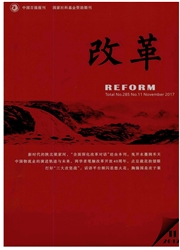

 中文摘要:
中文摘要:
农作物在生产和销售过程中,既面临来自自然灾害所致的产量损失风险,又面临因价格暴跌所带来的收入损失。早期美国联邦农作物保险以产量保险为主,但农场主生产的目标函数并非产量最大化,而是农业收入最大化,为保持美国农业产业政策与农场主目标函数的一致性,近年来联邦农作物保险逐步从“保产量”向“保收入”转变.收入保险在联邦农作物保险中已占据主导地位;为避免道德风险,收入保险的险种结构呈现出从个体收入保险向团体收入保险和农场总收入保险的转变;联邦政府的供需双向补贴机制和多样化的风险分散渠道是农作物保险得以持续经营的重要保障。我国应健全农作物保险的政府补贴结构,完善农作物保险的风险分散渠道。
 英文摘要:
英文摘要:
In the process of crop production and sales, farmers may suffer not only from risk of yield loss caused by natural disasters, but also from the loss of revenue caused by the price plummets. Early federal crop insurance in the United States mainly focused on yield insurance, whereas farmers' production target function is to realize the maximum of agricultural income, instead of maximum of crop yield. In order to maintain the consistency of the agricultural industry policy and the farmers' target function. In recent years, the federal crop insurance in the United States gradually tends to aim at "revenue protection" from "yield protection". Now revenue insurance has occupied the leading position in the federal crop insurance. The structure of the revenue insurance has changed, moving from individual revenue insurance to group revenue insurance and whole farm revenue insurance, to prevent moral hazard. The double subsidy mechanism of the federal government and the various channels of risk diversification in the United States are important guarantee for the sustainable management of crop insurance. In China, the central government should improve the subsidy structure and enhance risk diversification instruments for crop insurance.
 同期刊论文项目
同期刊论文项目
 同项目期刊论文
同项目期刊论文
 期刊信息
期刊信息
